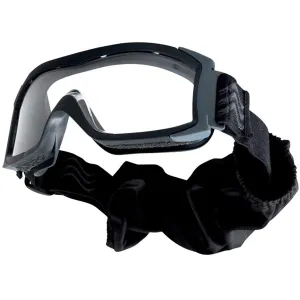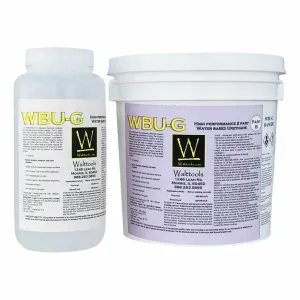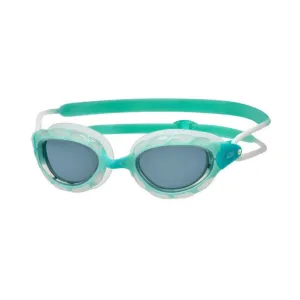Preparing yourself and your family for a disaster
Contents
Protecting your health in an emergency
Protecting your health in an emergency includes information for before, during and after an emergency on:
- water
- food safety
- getting rid of rubbish
- disposing of sewage
- accommodation
- looking after yourself
- hazardous substances
- volcanic ash
- pests.
The most likely causes of civil emergency in New Zealand are:
- floods
- earthquakes
- storms (cyclones, tornadoes)
- forest fires
- volcanic eruptions
- tsunamis (tidal waves).
In the event of an emergency, ordinary systems and services are often disrupted and unhealthy conditions can develop. You may survive a major disaster but be at risk of serious illness.
This booklet has three sections that tell you how you can protect your health in an emergency by:
- being prepared for a disaster
- knowing what to do during a disaster
- restoring safe conditions as soon as possible after a disaster.
Emergencies can happen at any time. There may be little or no warning, and there could be major damage. You may have to look after yourself and your family for several days. It may take weeks to recover from the effects of the disaster.
Be prepared and know what to do so you can protect yourself and your family from illness and disease.
In an emergency, sewers and drains may not be working. Diseases can be passed on through unsafe food and water, person-to-person contact, inadequate rubbish and sewage disposal or insects and rodents, such as rats and mice. Health services may also be out of action.
Useful facts
- Diseases that are already present are more likely to spread when water, sewerage and electricity are seriously disrupted, eg, hepatitis A, salmonellosis, campylobacteriosis, giardiasis.
- Some diseases can occur through the use of contaminated foods, eg, salmonellosis, campylobacteriosis, chemical food poisoning, bacterial food poisoning.
- Poor emergency accommodation and overcrowding can lead to the spread of illnesses, eg, influenza, measles, meningococcal disease.
- Poor emergency accommodation can encourage diseases spread by insects and animals, eg, food-borne illness, pediculosis (lice), scabies (mites).
- Lack of medicines, including usual prescription medicines can increase the risk of illness, eg, not having inhalers for asthma, spray or tablets for angina, insulin for diabetes.
There will be less chance of getting ill during the emergency if:
- you have a basic first aid kit with antiseptics and pain relief. First aid kits are available from pharmacies and supermarkets or you can make up your own.
- you have special medicines you need
- you and your family are up-to-date with all immunisation.
Preparing for an emergency
Check through the following information now and work towards being ready if a disaster happens.
Water
Household water supplies, including drinking water, could be affected. You need to store water for an emergency.
- Keep a supply of drinking water prepared, following the instructions below.
- Make sure you have on hand a supply of plain household bleach. It is important to check the bottle to ensure it contains no added perfumes, colourants, or detergents (surfactants).
- Clean your toilet cistern occasionally and avoid putting chemical cleaners in it (see ).
- Check that your hot-water cylinder and header tank (if you have one) are braced and tied with metal straps so they cannot fall over.
You need about 3 litres of drinking water for each person each day. You need also about 1 litre of water for each of the following:
- washing food and cooking for each meal
- washing dishes after a meal
- washing yourself (1 litre per day for each person).
Drinking water
To store enough drinking water for five days, prepare eight large, plastic soft drink bottles of water per person, including children. Add some extra for pets. Do not use empty milk bottles.
- Wash bottles and lids thoroughly in hot water.
- Fill each bottle with tap water until it overflows. Add five drops of plain, unperfumed household bleach per litre of water and store in a dark, cool place. Do not drink for at least 30 minutes after disinfecting.
- Make sure there are no air gaps and place the lids on tightly.
- Label each bottle with dates showing when the bottles were filled and when they need to be refilled.
- Check the bottles every six months (eg, at the beginning or end of daylight saving). If the water is not clear, throw it out and refill clean bottles with clean water and bleach.
- Store bottles in two separate places that are not likely to be flooded.
- Alternatively, thoroughly wash and fill plastic ice cream containers with water, cover, label and keep in the freezer. These can help keep food cool if the power is off and can also be used for drinking.
- Keep a supply of ice cubes and fruit juices.
Cooking, dishes, washing yourself
You can use water for cooking, dishes and washing yourself from these house supplies:
- hot-water cylinder and header tank
- toilet cistern. This water is only safe to use if no chemical toilet cleanser is present.
Food safety
Power failure will affect refrigerators, cold stores and food processing plants. It may be difficult to get safe supplies of food. Food in your fridge and freezer will go bad, and eating it could make you ill.
-
Keep on hand:
- unperfumed household bleach with no added colouring or detergents (surfactants)
- a supply of water
- tinned food for at least three days (write the purchase date on the cans)
- milk powder and UHT milk
- dried/non-perishable food, eg, rice, pasta
- foodstuffs that require no cooking, eg, breakfast cereals, dried fruit
- non-perishable food that does not need water added, eg, nuts, spreads, crackers, biscuits, muesli bars
- tinned and dried food for pets.
- Replace stored food at least every 12 months or before the use-by date.
Getting rid of rubbish
Rubbish collection services are likely to be disrupted during an emergency. Accumulated rubbish can be a health hazard because it will attract flies, rats and mice that may spread disease.
- Keep a supply of heavy-duty plastic bags, ties and a box of matches.
Disposing of sewage
Toilet systems are likely to be affected by a disaster through broken pipes, flooding of the sewerage system or breakdown of the pumping machinery. Human waste can spread disease.
- Have handy a sturdy, large rubbish bin with a lid, some plastic leak-proof bin liners, a toilet seat and toilet rolls (see ).
Accommodation
If your house becomes unsafe, you may have to move into temporary accommodation or make your own shelter.
- Make sure you know where to find camping equipment and materials to make shelters, such as tarpaulins, heavy plastic or pvc sheets, or waterproof trailer covers.
Looking after yourself
A major emergency can create risks to health through contaminated materials and exposure. Keeping yourself clean and keeping warm and protected from harsh weather conditions is essential.
-
Make sure you know where the following items are:
- first aid kit
- prescribed medication, eg, heart tablets, asthma inhalers
- disinfectant and soap
- rubber gloves
- insect repellent
- warm clothing, blankets, sleeping bags
- wet weather clothing
- torch and spare batteries
- up-to-date immunisation records, eg, tetanus.
- See for items to include in a survival kit.
Hazardous substances
Hazardous substances are harmful to health because they may be poisonous, corrosive, flammable, explosive or irritant. They can also cause contamination and damage if they are accidentally spilt in a disaster situation. You can recognise the most hazardous substances by the coloured diamond on the container.
Common household hazardous substances include:
- aerosol cans that can explode in heat, eg, oven cleaners, fly sprays, hair sprays
- bleach and laundry sprays
- gas leaking from household fittings
- petrol, lpg gas, gas cylinders for BBQs
- meths, paint thinners, turps
- garden chemicals and plant sprays, eg, Roundup®.
- Keep hazardous substances in a secure cabinet where they will not fall easily.
- Keep hazardous substances in original containers. DO NOT transfer into used food or drink containers.
- Store poisons and corrosive materials in strong unbreakable containers with tight-fitting lids, if possible in outside storage away from the house and out of reach of children.
Volcanic ash
- Know where your first aid kit is.
- Have cover-up clothing and goggles handy.
Pests
In a disaster situation, the presence of pests such as insects, rats and mice can become a real problem. They may carry disease and can also cause property damage.
Controlling pests means having basic sanitation systems, getting rid of breeding areas and possibly using chemicals. The gives a guide for how to control the most common pests.
As well:
- Keep a supply of fly spray on hand.
- Have rat baits and traps available.
- Make sure your food containers are vermin-proof.
-
Check that you have:
- set aside pest-free areas for food storage, preparation and serving
- stored and got rid of rubbish safely
- put screens on your doors and windows wherever possible
- drained areas where water might collect
- cleared scrub and brush
- used pest-proof construction materials, eg, concrete, steel, where possible, for buildings.
During an emergency
Listen to your radio for updates on the emergency and any public health issues.
Water
- Make sure you drink plenty of water.
- Wash your hands well. If water is in very short supply, keep some in a bowl with disinfectant added, but change frequently.
- Check your stored water by holding it up to the light. If it has anything floating in it or it is not clear, strain and boil for one minute or add five drops of plain, unperfumed household bleach per litre of water and stand for 30 minutes before drinking.
- Collect rainwater by either placing a clean container outside to catch rain or by disconnecting the downpipe from the roof and filling a container. Boil water for one minute before drinking. It is OK to use jugs with an automatic cut-off switch as long as they are full. On no account should the switch be held down to increase boiling time. Alternatively, disinfect with plain, unperfumed household bleach (1/2 teaspoon to 10 litres). Reserve one clean utensil to use as a dipper.
- DO NOT collect drinking water from the roof if it is contaminated with ash, smoke deposits or other debris.
- DO NOT drink water from the town supply unless you have been advised that it is fit for drinking.
- DO NOT assume domestic water filters are effective. They can become contaminated.
- DO NOT drink water from a private well if it has been flooded.
- Use spa and swimming pool water, if available, for keeping yourself clean and washing clothes.
- DO NOT waste water on cleaning clothes.
- Use a bucket or bowl for washing. Throw the used water over the land or put into a hole and covered with soil. DO NOT put it down the toilet or drains.
- Switch off power to the hot-water cylinder if the water supply fails.
Food safety
- Use treated water to wash vegetables and fruit. (Add five drops of plain, unperfumed household bleach to 1 litre of water and stand for 30 minutes, or boil for one minute.)
- Keep food containers and cooking utensils clean.
- Use disposable paper towels where possible.
- Store food safely to protect it from rats, flies and other pests, as well as any toxic chemicals.
- Get rid of all rubbish by burning or burying so that it does not attract pests.
Hints for using food if you are confined to your home
- Store all perishable foods (ie, food that is likely to go bad) in a cool, shady, airy place protected from dust, insects, rats and mice, eg, a pillowcase hanging from a tree.
- Eat perishable food first, eg, bread, before it goes mouldy, then semi- perishable food, eg, fresh vegetables.
- Use the food in the refrigerator first, if the power is cut off, then food in the cabinet freezer, then food in the chest freezer.
- DO NOT open the door or lid of the freezer any longer than absolutely necessary.
- Use defrosted food and fresh milk within two days.
- If you have to move, wrap all frozen food in blankets to delay thawing.
- DO NOT refreeze any food that has thawed out.
- Use canned and dried food last.
- Use camp stoves, open fires or barbecues for cooking food. Portable gas cooking appliances must be used outside.
- Wash hands with treated water when preparing food.
Salvaging food items and utensils after a flood
Floodwaters can carry bugs that cause disease from the ground surface, septic tanks and sewerage systems. These can contaminate food.
- Wash cooking, eating, and any other kitchen utensils that have been covered by floodwater in hot soapy water. Rinse thoroughly in safe water, then disinfect by immersing for one minute in a solution of 500 mls (about two cups) of plain, unperfurmed household bleach in 10 litres of water. Rinse again in safe water. Alternatively, boil all utensils for one minute and let cool.
- Destroy all unpackaged food and food items packed in paper, cardboard or non-waterproof material that have been exposed directly to the floodwater.
- Get rid of all foods needing refrigeration when they have been unrefrigerated for more than two hours.
- If the power has been off to the freezer for more than two days, get rid of all thawed food.
-
Save foods in waterproof, airtight containers (eg, tins) that have been in
floodwater, but make sure they are thoroughly cleaned before opening by:
- washing and scrubbing in warm water that contains soap or detergent, then rinsing in clean water
- soaking for at least one minute in a solution of 500 mL (two cups) of plain, unperfumed household bleach mixed with 10 litres of water, then rinsing in clean water from a safe supply.
- Write on the contents of tins if labels are damaged so that you know what is inside them.
- Wash and disinfect your can opener before using.
- Throw out the contents of bottles with crown tops and crimped or screw caps if water rose above the neck of the bottle. It is safer to get rid of all home preserves, as these are a higher risk than commercial items.
- DO NOT use packaged or canned food if it has been punctured or is bulging or leaking or the top has popped up. Throw out any canned foods dented on the side or along the top or bottom seams.
- Cook all food thoroughly and eat immediately. Cook only enough for each meal. DO NOT save leftovers.
- If in doubt, throw out!
Getting rid of rubbish
- Store rubbish in heavy-duty plastic bags securely tied ready for collection.
- Take rubbish bags to a central collection site if available.
- Dig a trench in the backyard. Cover with soil after each use to reduce smells and vermin, eg, rats.
- Burn dry rubbish in the backyard using large drums, or build a makeshift incinerator from concrete blocks, bricks and wire mesh.
Disposing of sewage
You will need a makeshift toilet if your toilet cannot be used.
How to make a temporary toilet
- Line a bucket or rubbish bin with a strong, leak-proof plastic bag.
- Put half a cup of liquid bleach in the bag.
- Make a seat from two planks of wood or use a toilet seat on top of the container.
- Keep the bin completely covered when not in use, to prevent attracting flies.
- Tie the top of the bag firmly when full and place it inside another bag.
- Dig a hole well away from the vegetable garden and downhill from any water source and bury the bag.
- Make sure the bag is well covered with dirt.
- Wash your hands thoroughly after going to the toilet or handling human waste.
How to make a long-drop toilet
- Dig a hole up to 1 metre deep well away from the vegetable garden and any water source.
- Make a seat out of planks of wood.
- Cover the waste properly with dirt after each use.
- Throw in a little garden lime, insecticide or disinfectant to reduce smells and flies.
- Use the long-drop until it is full to within 300 mm of ground level.
- Cover completely with soil and dig a new long-drop.
- Wash your hands thoroughly after going to the toilet or handling human waste.
Accommodation
In a major emergency, especially earthquake and flood, there may be serious damage to buildings. You may have to leave your home and live in emergency accommodation. If this happens:
- Make sure power, gas and water are all turned off before you go.
- Take as many items as you can from the .
Looking after yourself
- Wash your hands often.
- DO NOT touch your face with your hands without first cleaning them, when they have been in floodwater. It may carry materials which are dangerous to health.
- DO NOT smoke or eat in a contaminated area.
- Wear rubber gloves and wash hands thoroughly with soap and water after handling contaminated food and other material.
- See a doctor as soon as possible if you receive a puncture wound or have any other sort of accident.
Hazardous substances
If a major leakage or spillage of a hazardous substance occurs, you may be evacuated from the area by Civil Defence.
If a minor or local hazard is obvious, ie, you can see it or smell it:
- Move away from the source, preferably to higher ground upwind or across wind.
- DO NOT light your gas stove, candles or cigarettes if you smell gas or see spills.
- Report the hazard to the Police, Fire Service or Civil Defence.
- DO NOT wade through floodwaters that could contain hazardous substances without wearing protective footwear and clothing.
- Be ready to move away from the area if there is a large spill (eg, surface water and/or sewerage system waste water) or if most basic household services are cut off or damaged.
- DO NOT rely on your sense of smell to assess danger. Be extra careful and get expert advice.
- If in doubt, close the windows and stay indoors.
Volcanic ash
Volcanic ash can cause eye, skin and breathing problems, as well as property damage. If there is an eruption:
- Stay indoors or in a car as much as possible.
- Have a first aid kit handy.
- Wear goggles to protect your eyes when outside.
- Protect skin with suitable clothing, eg, headgear, footwear, gloves.
- Breathe through a fine-particled mask or damp cloth.
- Save water in the bath or other containers in case the water supply becomes polluted or is cut off.
- Keep as much ash out of the house as possible. Close all windows and doors properly and cover cracks under doors with damp towels.
- DO NOT use exhaust fans or clothes dryers.
- Leave outdoor clothing outside.
- Stay indoors if visibility is difficult because of thick ash conditions. A hand torch is only effective at very close range.
- Clear tephra (solid matter from an eruption) build-up from roofs and guttering to prevent the roof from collapsing and drains getting blocked.
- Wash all vegetables carefully. Keep all food clean and protected. Ash can be poisonous.
Pests
- Be careful about basic cleanliness, especially disposal of rubbish and sewage.
- Use insect repellents on exposed parts of the body to keep away flies, mosquitoes, ticks or sandflies.
- Be careful when using repellents with young children.
- Be aware of the dangers of rat traps and poison baits for children and pets.
- Wear long-sleeved tops and trousers when mosquitoes are present.
After an emergency
It may take time to get everything back to normal after an emergency.
- Contact your doctor if you are unwell.
- Let the authorities know of any conditions that could be dangerous or could encourage the spread of diseases.
Water
- Flush your water pipes, if on town supply, by turning the taps on and running until the water is clear.
- If you collect water from your roof and it is contaminated, eg, from volcanic ash fallout, smoke or wind- blown debris, disconnect the tank at the downpipe and wash the roof.
- If your water tank is affected by floodwater or contaminated from fallout on the roof, get rid of the water (it may be polluted), clean the tank out and disinfect it. Boil water before drinking.
- If you use bore water that may have been affected by floodwater or surface water runoff, pump the bore to waste for 24 hours. If the bore is under water, do not pump.
- If your water comes from a well that may have been affected by floodwater or surface water runoff, mix 2.5 litres of plain, unperfumed household bleach with 45 litres of water and pour down the well. Replace the well cover and turn on each tap until there is a smell of chlorine in the water. Turn off the tap, but do not use the water for eight hours. Then open all taps and flush out the chlorine.
Food safety
Follow the same food safety procedures as during the emergency and also:
- Protect food from heat, dirt, insects, pests and pets.
- Get rid of food which is smelly, slimy, mouldy or discoloured.
- Cover pots to save fuel and cook food thoroughly.
- Wash dishes immediately after eating and keep clean ones covered.
- Throw out any food contaminated with glass, dirt, chemicals or sewage.
- DO NOT eat garden produce if the soil has been flooded. Clean up and remove debris and sprinkle gardens with lime.
- DO NOT eat shellfish from the river mouth or harbour after an earthquake or flood.
- DO NOT use any tinned food with split or swollen seams.
- Always wash your hands before and after handling food.
Getting rid of rubbish
- Listen for Civil Defence or the local council’s instructions on getting rid of rubbish.
- Sort perishable and non-perishable rubbish and flatten any bulky items.
- Bury rubbish away from any water course, such as a stream or river. Cover each layer with soil and add lime or disinfectant to reduce smells. Mark all sites.
- Compost all organic refuse if possible.
- Store rubbish that cannot be buried or burnt in covered containers or tightly tied plastic bags, ready for collection.
- Report any rubbish contaminated by hazardous substances to Civil Defence.
- Tell your insurance company about any condemned item of property before getting rid of it. If you are not insured, make a list of any items being dumped. Have it checked and signed by a responsible person in case you are eligible for a relief grant. Take photos if necessary to record what you are getting rid of.
Disposing of sewage
- Use makeshift toilets until advised by authorities that it is safe to use flush toilets.
- Use disinfectant or garden lime to reduce smells. Mark all toilet sites.
-
Get your septic tank pumped out to remove all silt and sludge if it has been
covered by flood water.
NB. Septic tanks may not work properly until the level of the water underground has gone down.
Accommodation
Before you return to your house:
- Contact an electrician or the electrical supply authority before switching power on again if water has reached under-floor wiring or wall sockets or the structure has been damaged by an earthquake.
- Contact gas supply authorities if the gas meter has been affected by water.
- Make sure that the local authority health or plumbing officers have checked that the water supply and sewerage systems are safe and working properly.
Restoring a house after flood damage
Soon after heavy rains have stopped and waters have drained off the ground surface, sewers will generally return to normal function. It is important to clean up, drain and dry out the house as quickly as possible.
- Take photos of the damage before starting the clean-up.
- Take out everything that is wet and that can be moved – floor coverings, furniture, bedding, clothing, etc, and put them outside to dry when the weather is fine.
- Get rid of mattresses and other large items that have been soaked with floodwater. Foam rubber mattress or pillows may be able to be washed, disinfected and dried in the open air.
- Get rid of contaminated clothing, carpets, upholstered furniture, toys and bedding unless they can be cleaned and disinfected.
- Check for trapped water and mud in wall cavities, as well as under shower trays, baths, benches and bottom shelves. You may have to chisel out some bricks at the bottom of brick veneer walls.
- Remove skirting, if necessary, and cut out softened plaster board in damaged areas. (Consult an expert such as an insurance assessor or builder.)
- Use heaters (eg, hot air blowers for under-floor space), but open all doors and windows.
- Replace wall linings, floor coverings, etc, only after things have dried out.
- Leave redecorating for at least three months after finishing the repairs to prevent risk of mould, blistering and peeling.
- DO NOT light fires in brick fireplaces for at least two weeks, and then use only small fires until the firebricks have dried out.Consult an engineer if there are signs that the house has moved on its foundations, eg, buckled floors, new cracks in walls, out of shape door frames.
Cleaning out a basement after flooding
- Check all floor drains in the basement to see that they are clear of debris and drain away water under the house. Try to increase the airflow to speed drying.
- Drain any surface pools by pumping or bailing.
- Wash or flush down walls, shelves and floors with clear water and sweep to remove contaminated water and sediment.
- Use a solution of 1 litre of household bleach in 10 litres of water to rinse down walls, floors and other equipment. Leave on for 30 minutes before rinsing with clear water. Keep windows open during this treatment.
- Use plenty of hot water and soap or dishwashing detergent for the final cleanup of walls, floors, cupboards etc.
- Ventilate area by opening all windows or use fans, if power is available.
- Use a commercial deodoriser, if necessary, to remove any remaining smells.
Looking after yourself
- Make sure all those helping with the clean-up wear rubber gloves and wash their hands thoroughly before eating, drinking or smoking.
- Disinfect any cuts and cover with a waterproof dressing.
- Keep small children away during the clean-up phase.
- Take precautions against insect bites by using repellents and wearing trousers and long-sleeved tops.
- Wash any clothing, bedding and other contaminated materials, such as curtains, using detergent. Rinse in clean water with adde




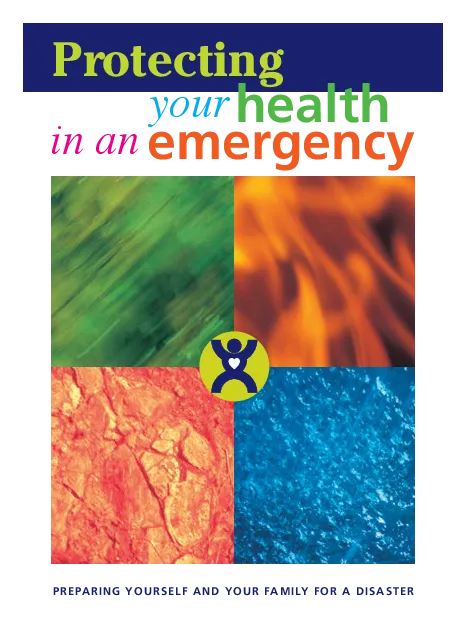
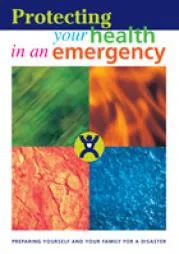
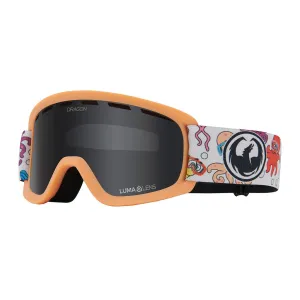
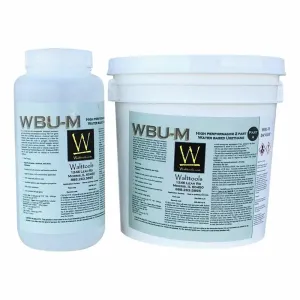
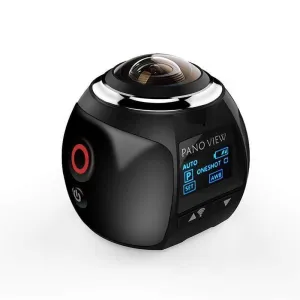
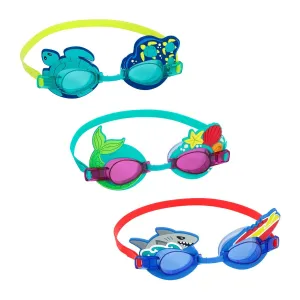
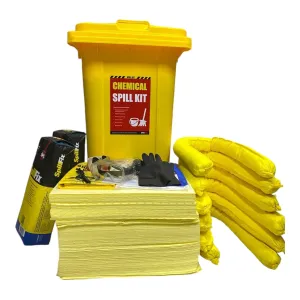
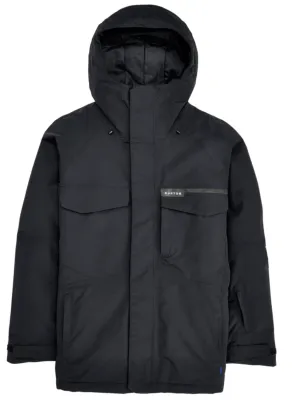
![Bestway Explora Swimming Mask Goggles [WS] Bestway Explora Swimming Mask Goggles [WS]](https://www.hikezonez.shop/image/bestway-explora-swimming-mask-goggles-ws_hjJt5C_300x.webp)
